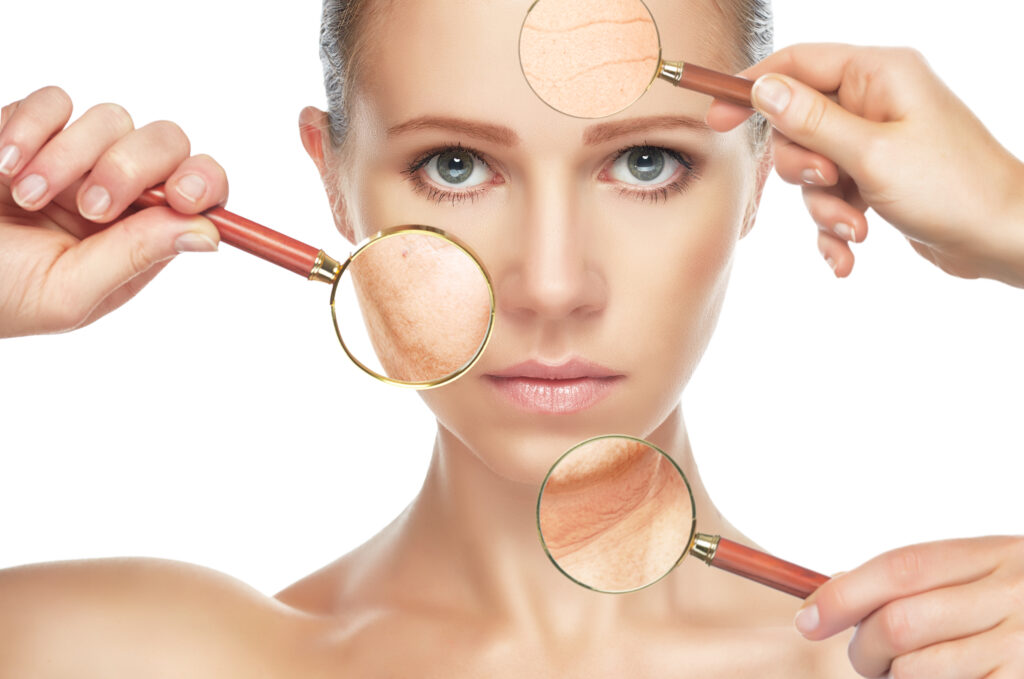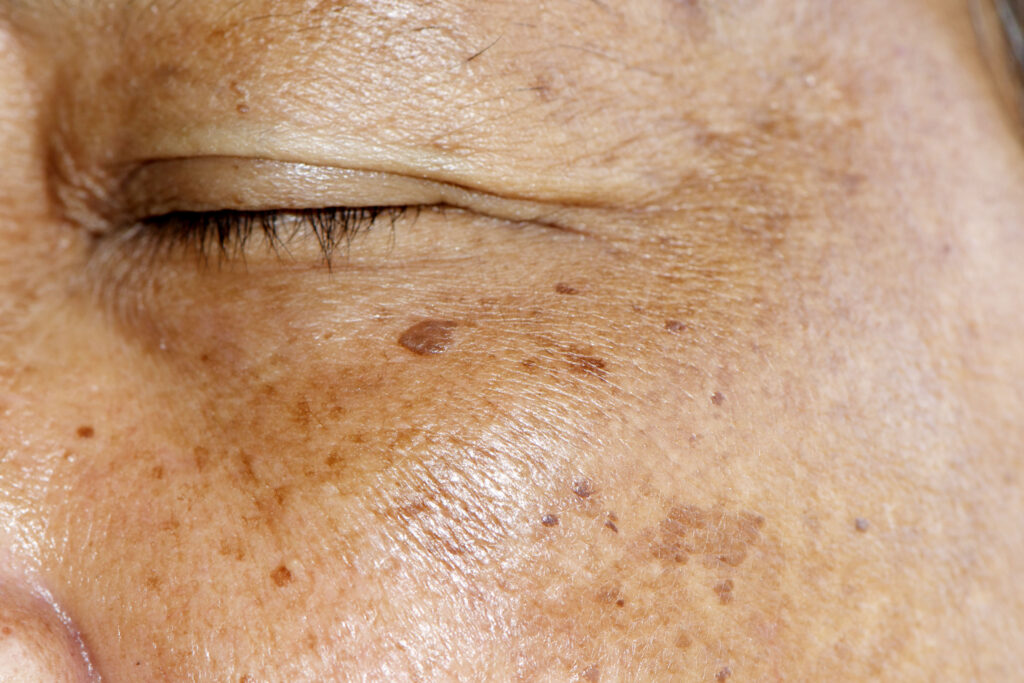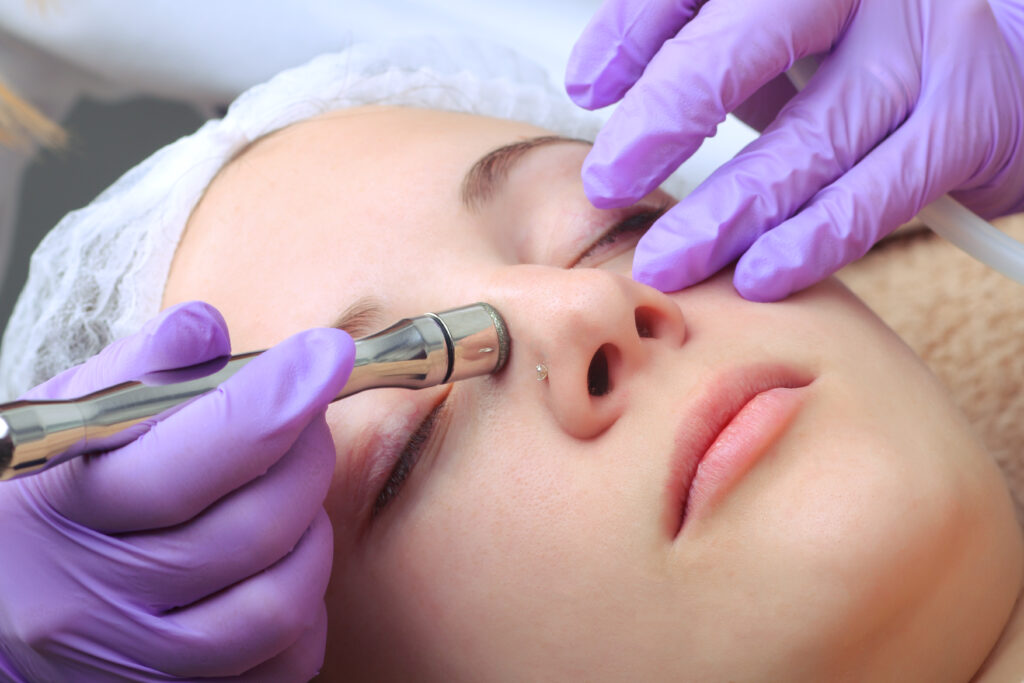A variety of skin conditions occur, each with its own set of challenges. This discussion will cover three prevalent conditions: acne, sun damage, and hyperpigmentation. Several treatment options are available for various skin conditions, ranging from medical therapy to mechanical procedures. We will explore each and how they are suitable for different skin conditions.

Acne
Acne is a skin condition that occurs when hair follicles become obstructed with oil and dead skin cells. This results in whiteheads, blackheads, pimples, and even deeper cysts or nodules. Many factors, including hormones, genetics, and bacteria, can cause acne.
The treatment for acne depends on the severity of the condition. Easy to purchase products containing salicylic acid or benzoyl peroxide often are sufficient for mild cases. More severe acne may require prescription medication, such as topical retinoids, antibiotics, or oral contraceptives.
Finally, in-office treatments for acne can also be considered, including chemical peels, microdermabrasion, and laser therapy. These treatments can help reduce the development of acne and stop further issues by unclogging pores and killing bacteria.
Sun-Derived Skin Damage
Sun damage, otherwise known as photoaging, is a common skin issue that occurs when skin is overexposed to Ultraviolet (UV) rays for extended periods. This can result in wrinkles, fine lines, dark spots, and skin cancer. The damage caused by the sun can be cumulative and can occur over a lifetime of sun exposure. It can also be immediate and result in real-time damage that requires immediate attention.
The treatment for sun damage includes topical products that contain antioxidants and vitamin C. These ingredients add protection and repair the existing damage.
Finally, for those seeking early treatment for rapid sun damage, the option of chemical peels, microdermabrasion, or laser therapy can be considered. These treatments can help improve the appearance of sun-damaged skin as well as improve skin texture and tone.
Hyperpigmentation

Hyperpigmentation is a skin condition that results in dark patches or spots on the skin. This condition can occur secondary to sun exposure, hormonal changes, or skin injuries. Hyperpigmentation can be treated with topical products that contain ingredients such as hydroquinone, retinoids, and vitamin C.
In-office treatments for hyperpigmentation include chemical peels, microdermabrasion, and laser therapy. Such treatments can assist in diminishing hyperpigmentation visibility while enhancing skin texture and tone.
Effective Skin Treatments
In addressing diverse skin issues such as acne, sun damage, and hyperpigmentation, numerous efficient skin treatment options exist. Among the most prominent are chemical peels, microdermabrasion, and laser therapy.
Chemical Peels
Chemical peels involve the treatment of the skin with a chemical solution, which causes the top layers of the skin to peel away, revealing smoother and brighter skin underneath. Chemical peels have different strengths, from light to mild to deep, and can be customized to target specific skin concerns.
- Light peels are the mildest type of chemical peel and only target the top layer of the skin. They are typically made with alpha-hydroxy acids (AHAs), such as glycolic acid and lactic acid. Light peels can improve skin texture, reduce the appearance of simple imperfections, and brighten the complexion. These are excellent options for individuals with mild skin concerns or those with sensitive skin.
- Medium peels target the middle layer of the skin and are typically made with trichloroacetic acid (TCA). Medium peels can improve the appearance of age spots, fine lines and wrinkles, and moderate skin discoloration. However, this type of peel may cause some redness and peeling and requires a longer recovery time than light peels.
- Deep peels are an extensive type of chemical peel and penetrate into the deepest layers of the skin. They are typically made with phenol and are used to treat severe skin damage, including deep wrinkles, sun damage, and scarring. Deep peels require a longer recovery time and can be somewhat painful during the healing process.
The chemistry behind chemical peels is an essential factor to consider when selecting the right treatment for your skin. The active ingredients in chemical peels, such as AHAs, BHAs, and TCA, directly correlate with the treatment’s effectiveness.
AHAs, such as glycolic acid and lactic acid, exfoliate the skin’s surface and improve its texture. BHAs, such as salicylic acid, penetrate deeper into the pores and are effective at treating acne-prone skin. TCA is a more potent acid that can penetrate the skin’s middle layers, making it an effective treatment for moderate skin damage.
When selecting the right chemical peel for your skin, it’s essential to evaluate factors such as sensitivity, ethnicity, and skin concerns. For example, individuals with darker skin tones may be more prone to hyperpigmentation after a chemical peel. Thus, a lighter peel may be a better option.
Those with sensitive skin may want to consider a milder peel or consult with a dermatologist before undergoing treatment. It’s also important to consider any specific skin concerns, such as acne or sun damage, and choose a peel that targets those concerns.
Microdermabrasion And Dermabrasion
Microdermabrasion is a minimally invasive procedure that involves using a device to exfoliate the top layers of skin. This treatment can improve fine lines, sun damage, acne, and hyperpigmentation.
During the treatment, a handheld device is used to spray tiny crystals onto the skin’s surface, which are then suctioned back up. This process exfoliates the skin, removing dead skin cells and promoting cell turnover. The procedure is painless and requires no downtime, making it a popular option for those with busy lifestyles.

Dermabrasion is a more invasive treatment that involves the use of a rotating diamond-tipped instrument to remove the outer layers of the skin. This type of treatment is typically performed by a dermatologist or plastic surgeon and is used to treat more severe issues, such as deep wrinkles, scars, and skin discoloration. Dermabrasion requires a longer recovery time.
Both microdermabrasion and dermabrasion work by stimulating the skin’s natural healing process and promoting cell turnover. By removing the outer layers of dead skin cells, these treatments allow new, healthier skin cells to come to the surface, resulting in a more youthful, radiant complexion. Additionally, these treatments can also stimulate the production of collagen, which can help to improve skin elasticity and firmness over time.
Laser Therapy
Finally, laser therapy, otherwise known as laser resurfacing treatment, is a non-invasive treatment that uses high-energy light waves to target specific areas of the skin. Laser therapy can be used to treat a variety of skin concerns, including acne, sun damage, and hyperpigmentation.
During laser therapy, a handheld device is used to deliver the laser energy to the skin. This energy is absorbed by the skin’s pigment or water, causing the targeted area to heat up and break down. The body then naturally eliminates the damaged tissue, leaving smoother, more even-toned skin.
Choosing the right laser resurfacing treatment can be difficult, especially with today’s numerous options. However, selecting the most suitable treatment for your skin type is critical to achieving the best results and minimizing the risk of complications.
When choosing a laser resurfacing treatment, the safest and most standard step is to consult with a board-certified dermatologist or plastic surgeon. They will evaluate your skin type, skin concerns, medical history, and lifestyle factors to determine which treatment is most suitable for you. It’s important to disclose any medical conditions, medications, or allergies to avoid possible complications.
There are different types of laser resurfacing treatments, including ablative and non-ablative lasers.
- Ablative lasers, such as CO2 and erbium lasers, discards the outmost layer of skin, promoting the growth of new, healthier skin cells. They are suitable for treating deep wrinkles, scars, and skin discoloration.
- Non-ablative lasers stimulate collagen production and promote skin rejuvenation without damaging the outer layers of the skin. They are suitable for treating fine lines, mild skin laxity, and acne scars.
Laser therapy can cause some mild discomfort during the treatment, but most patients recover well without the need for pain control. Depending on the intensity of the treatment, some redness or swelling may occur following the procedure, but this typically subsides within a few days.
Final Thoughts
Numerous facial treatment methods are available to address a wide range of skin issues. Among the most effective treatments are chemical peels, microdermabrasion, and laser therapy.
It’s best to consult with a physician that is board-certified in dermatology or plastic surgery to achieve the best-expected outcome.
